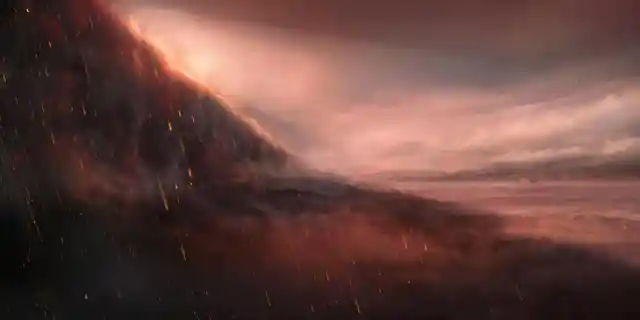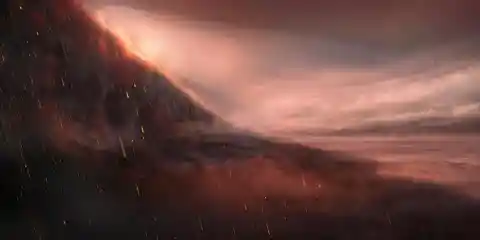Do you ever find that you look outside the window and think the rain looks especially metallic? It can come from all manner of reasons, not just the color of the sky and the ground as the rain falls.


However, while we don’t see metallic rain on our planet, it does rain metal on some exoplanets. Quite literally it rains metal.
Go to exoplanet WASP-76b and you would find that, thanks to research from the Very Large Telescope in the European Southern Observatory, we can say actually appears to rain metal.
The world, extreme in many different ways, is capable of causing iron to rain down from the sky. The lead study author of the event, David Ehrenreich of the University of Geneva, said: “One could say that this planet gets rainy in the evening, except it rains iron,”
Described in the Nature journal upon discovery, the planet only shows it’s “day-side” as the “night-side” of the planet is caked in perpetual darkness. So, we don’t really know what happens there at night. What we do know, though, is that the day-side can reach temperatures as high as 4,350F.
This excessive heat could quite literally cause atoms and metals – like the iron – to evaporate into the atmosphere itself. Some of this iron is then put into the night side caused by planetary winds and rotation.
Then, the iron is able to find a cooler environment – nowhere near as hot as the day-side – and is able to condense once again. Then it does start to quite literally raining iron from the sky. Imagine being hit with little clumps of iron as you make your way to work during the day!
The iron vapor, though, is nowhere to be seen in the mornings of the planet. It’s suggested because it’s raining iron exclusively on one side.
So, if you ever somehow manage to warp to WASP-76b, make sure you stay on the day-side. It might be a touch warmer than you’re used to, but at least you won’t get knocked out with iron hail!